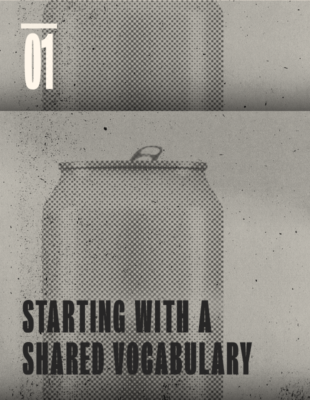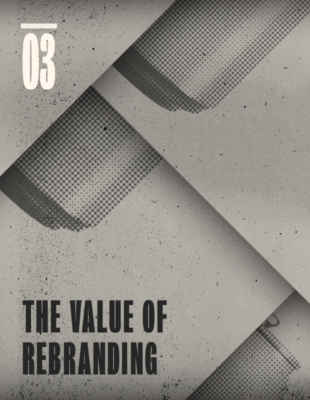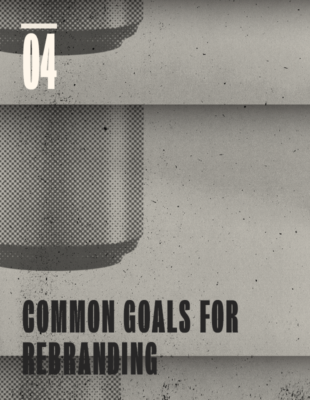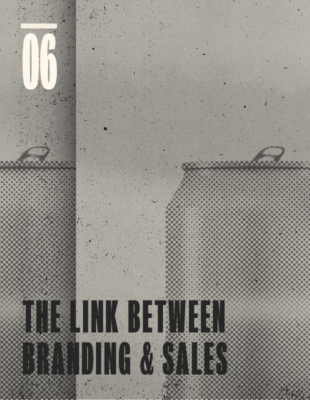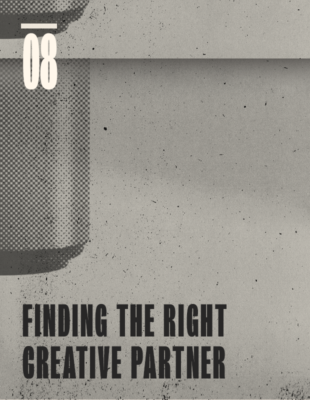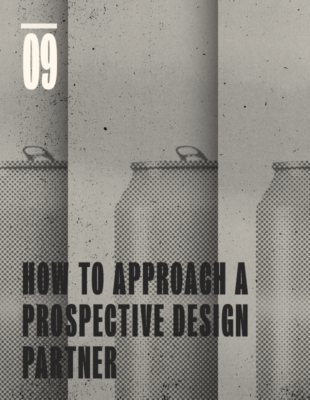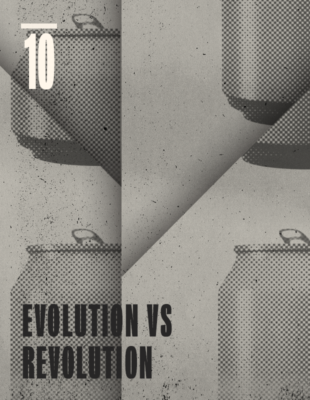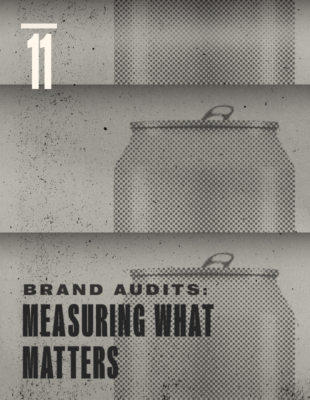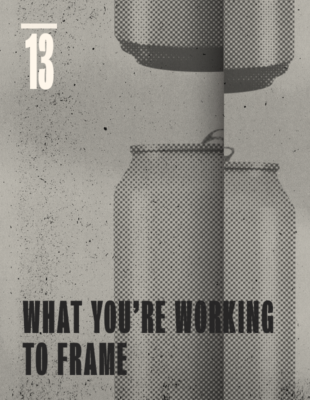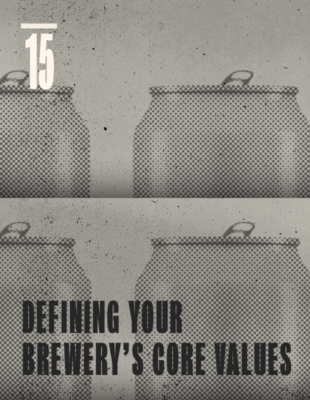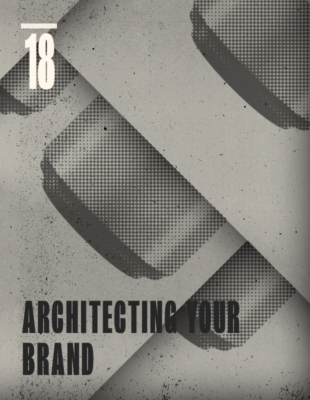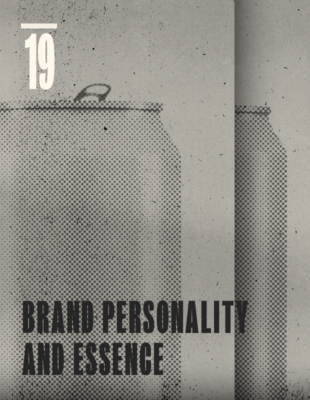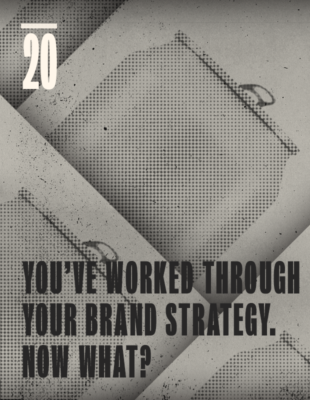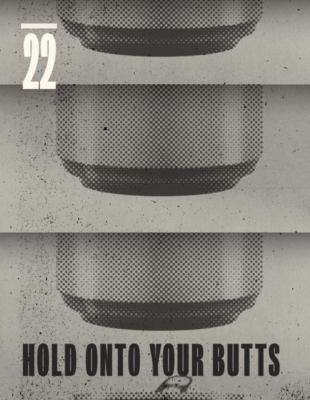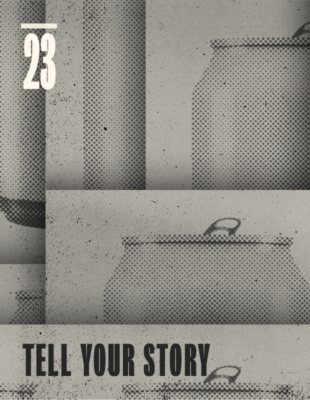
09
How to Approach a Prospective Creative Partner
Every design firm will have a different onboarding process, but they generally fall along these lines:
-
You reach out to see if they’re taking on new clients.
-
They respond (promptly, hopefully) to set up a meeting to learn more about your project. Subjects discussed during this call will range from your brewery history and project goals to budget, timeline, deliverables, intellectual property and next steps.
Quick note: This initial meeting can be likened to a first date—be wary of someone who’s more concerned with whipping out their portfolio and talking about themselves than they are with listening to what you have to say. A group that asks lots of questions and actively listens to you could be a good partner.
-
At this point, if you and the design firm determine this is a good fit, the design firm will build a proposal.
The purpose of proposal is to capture the conversation and scope you discussed and clarify expectations on both ends. The proposal should clearly outline the firm’s process for guiding you through your rebrand, the specific deliverables you’ll receive, and will include a rough timeline, fee breakdown and various notes (travel itinerary, intellectual property rights, etc.).
During the proposal stage, there can as much be back-and-forth as needed—not necessarily haggling over price, but making sure that the scope covers everything you need and want. It’s not uncommon to go through a few rounds of edits to get the scope properly defined, and it’s worth noting that any changes in price will almost always mean a change in scope as opposed to a direct discount. If there are some items you want to tackle but can’t afford right now, you can always tackle them down the road.
-
Once the scope is good to go, the design firm will send over a contract for you to sign along with a deposit invoice (ranging anywhere from 25 to 50 percent of the total contract) and the project kickoff plan.
Here are a few other things to consider as you vet potential design firm partners.
Don't shop for style
It’s not uncommon for design firms to develop a familiar visual style over time. This means that any coffee shop, craft brewery, tech startup, and laundromat that they brand will all look similar. I’ll spare you the soap box rant about how this means that they’re actually not “effective” designers and instead tell you that you should not shop for a branding partner based solely on their overall style.
Why? Because you’ve already made up your mind as to what you want your brewery to look like. Your brand voice and visual style should be driven by your brand strategy process and positioning goals more than personal preferences.
Of course, you should love the work a firm has created for other breweries and businesses, but you should be looking for range in their portfolio. Have they made something that looks old, or high tech, or super premium? Can they handle illustration work? How do they build their clients’ identity systems? Have they successfully handled other brewery rebrands?
You want someone who will approach your project with a fresh set of eyes. There’s no one-size-fits all solution for brewery branding. A competent creative partner needs to look at your company, your industry and competitive set, as well as your hopes and dreams and let this context drive strategic, visual and messaging decisions throughout the project. What you don’t want is someone to come in and apply the same look they’ve sold to six other brewery clients.
Ask about their process
Be wary of patented phrases and flashy process names. Dig deeper into how they frame project goals, how they intend to involve you, and how they manage revision requests, market research and intellectual property. You should clearly understand every single step of their process.
On expertise
Full disclosure (again), I own a design firm that specializes in brewery branding. However, in an industry this crowded (and still growing), expertise in a partner—whether it’s a branding firm, business consultant, or the canning line manufacturer you’re considering—is extremely important.
Yes, you can hire a group with little-to-no beer branding experience. And you may even be able to contract them at a lower rate because they want to give their team a cool project to work on. But this knowledge gap may show through in the work they do for you (and even more so when you’re on a tight timeline and wrestling with TTB and packaging production issues).
On liking them
A rebrand can take anywhere from six months to a year or more. So while you don’t need to like your design team enough to invite them to your birthday party, you should be able to envision yourself having a fun working relationship. If they rub you the wrong way in your first meeting, imagine what it will be like meeting with them ten more times over the next several months. (Imagine some asshole designer showing up to a meeting wearing a vest. Ugh.)
It’s also important to realize that any design firm you talk to is also vetting you. They’re looking for signs that your business is not only viable but that you’ll be fun to work with as well. For what it’s worth, CODO only works with people we like. This might not be the best business practice, but as a core rule, it has never steered us wrong over the last ten years.
What will this cost me?
You can hop on 99 Designs right now and grab a new logo for a few hundred bucks. Or, if you’re more budget conscious, you can jump on Fiverr and spend—get this—$5. Or, if you want to ball out of control, you can spend $1 million like Pepsi did on its 2008 rebrand.
I’d love to give you a solid number to put in your budget, but it will be different with each project, every market, and every agency you talk to. Making this more complicated, if you ask three different agencies to quote your work, you’re going to get three different prices.
A common figure we’ve seen in business books recommends allocating between 5–15 percent of your annual revenue for a branding budget. So, if your annual revenue is $1 million, you’d need to have $50,000–$150,000 to work with. These figures are likely calculated based on a broader annual budget than by factoring the return you can get with compelling branding. But, we do find this to be a pretty accurate range for planning purposes.
It’s important to talk about money up front because it will quickly determine whether or not you can afford the firm you’re talking to. We’ve heard the concern that if a brewery shares its budget, then that’s magically what the project will cost.
Of course this can happen, but an honest design firm will tell you when you’ve set aside too much money. If that’s the case, they should also tell you what you can get with that extra money—perhaps other services they can offer on top of what you already need.
A final note on budgeting for a rebrand: Branding is the fastest way to differentiate your brewery. Full stop. When you consider the challenges associated with brewing great beer, bringing people into your taproom, fighting for every draft account, and working to enmesh your brand into peoples’ lives to get your beer off the shelf and into their homes, branding can seem like a bargain. Nailing your rebrand will have infinitely more value for you than its initial price tag.
How long will this take?
Again, every project is different, but if you can budget six months to a year for a full rebrand, you should be able to comfortably tackle the project. This number can flex up or down depending on how large you are and the specific scope of your project. Most of our larger rebranding projects clock in at around 8–14 months. We’ll take a closer look at this in Section 7 when we discuss how to develop a master timeline for launching your rebrand.
On working remotely
Don’t be put off by a creative partner being several time zones away from you
(we’re working with breweries in Belgium, China, Canada and Australia as I write this). Tools like Skype and Zoom have rendered this a non-issue.
You should, however, consider that it might be worth having the agency come out to visit your brewery during the project. We’ve found that a trip to meet the team, see the brewery and experience their market first hand during the kickoff (with subsequent presentations and meetings held remotely) to be a perfect balance.
Yes, travel will add to the project cost, but it’s invaluable for your design partner to experience your culture, your market and your beer first hand.
On RFPs
At some point during your search for a design partner, you may be tempted to put together a Request for Proposal (RFP). This document—call it a “shopping list”—outlines what you want to tackle throughout a project—everything from your wish list, your budget and timeline, and various other requirements for the partnering firm. It may seem like a reasonable thing to do, but this approach is fundamentally flawed.
By their very nature, RFPs will outline specific deliverables. The problem with this is that these components may or may not address whatever problem it is that you’re trying to fix by hiring a design firm in the first place. Maybe you don’t need to completely redevelop your website, for example. Designers solve problems for a living, and by leaving your problems largely unframed, you allow your design partner to bring enormous value to the table by providing you insights and ideas you would’ve never discovered had they simply responded to your specific RFP deliverable list.
Okay. If not an RFP, then what?
You should be looking for a long-term relationship built on trust and value (remember, you’re going to be working with this team for close to a year, and potentially many more thereafter). Find a few firms that you think would be great to work with and reach out to them. Feel them out. Then, if you like what you’re hearing, work with them to build a proposal and make your decision from there.
Once you’ve hired the perfect design firm, they should guide you through the important work of weighing your brand equity. While every firm has its own process and philosophy, everything we’ll discuss in the next few sections should be done in some form or another.
Your brewery team can jump start this process by discussing and working through everything we cover in the next few sections. Again, you will need to work with an
outside firm for this process. But you can work to ensure a smoother process by doing this strategic legwork ahead of time.
